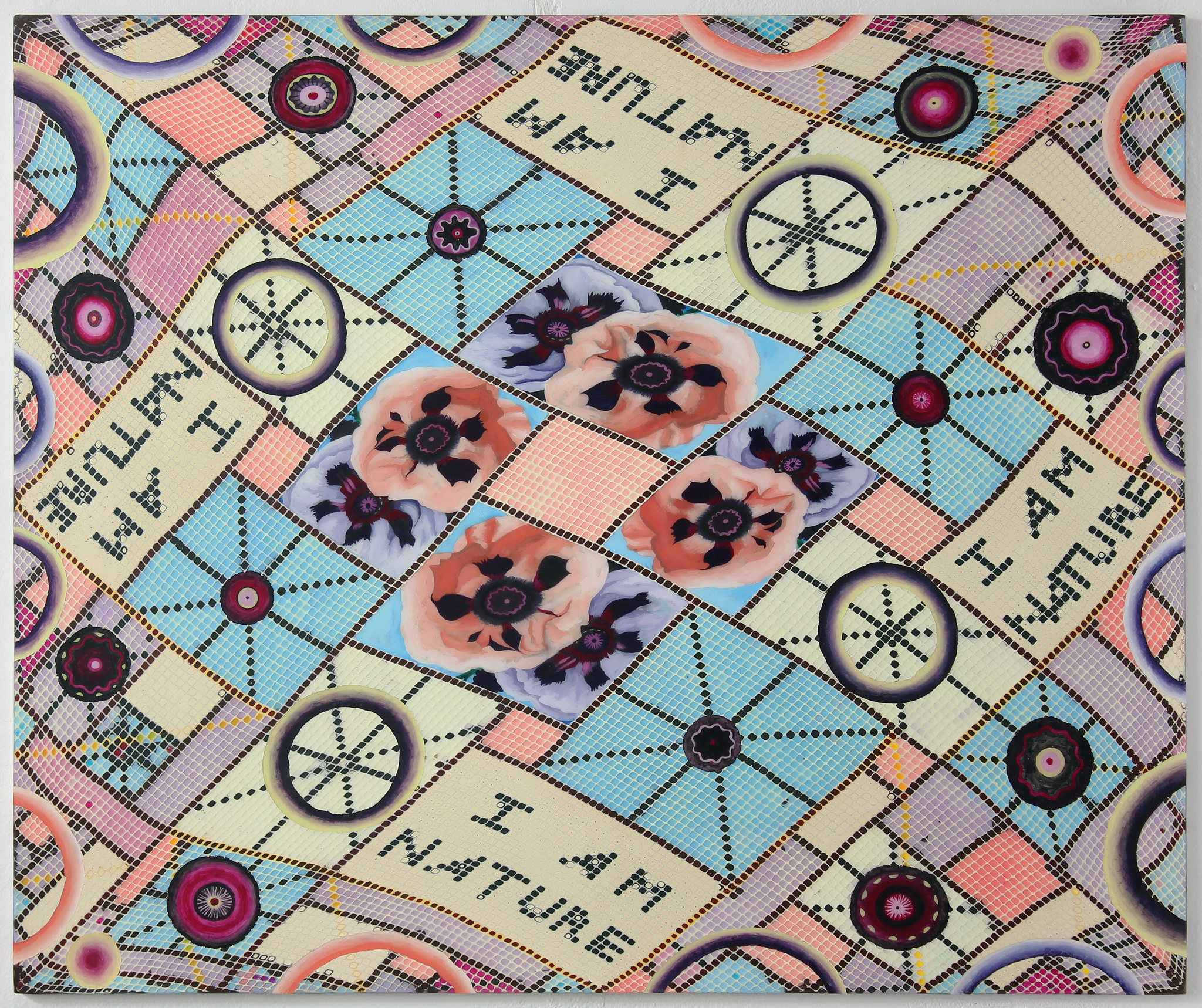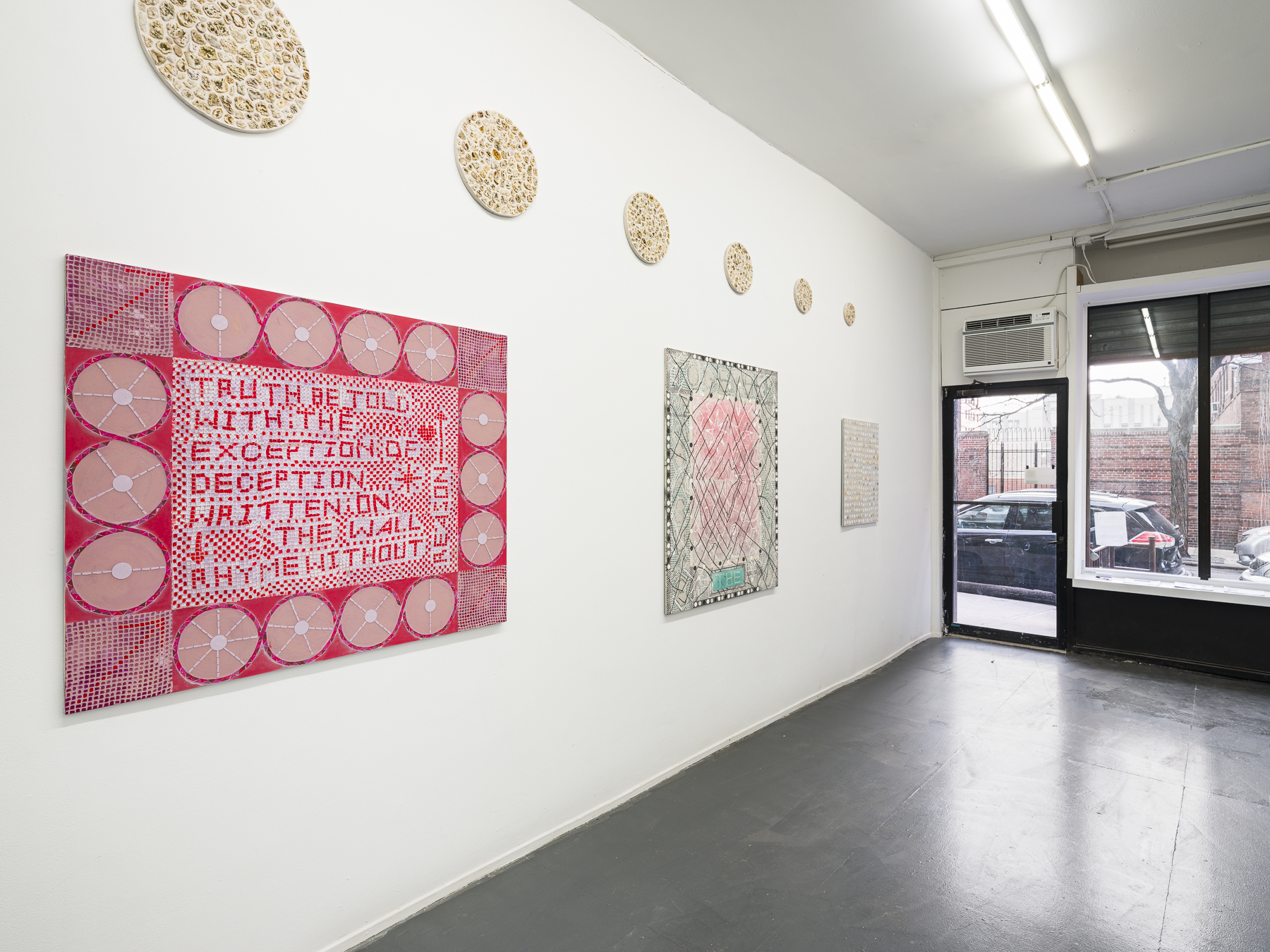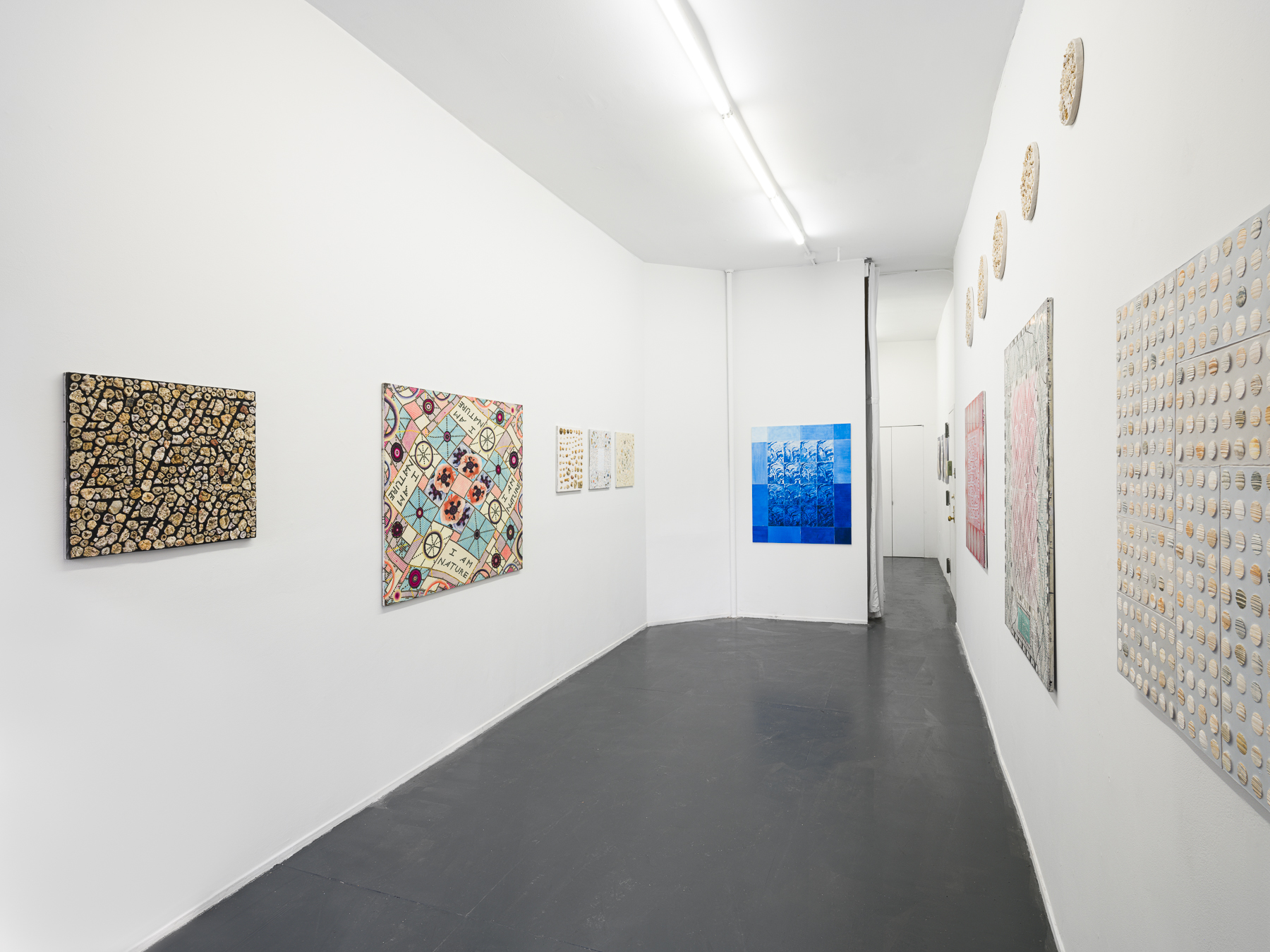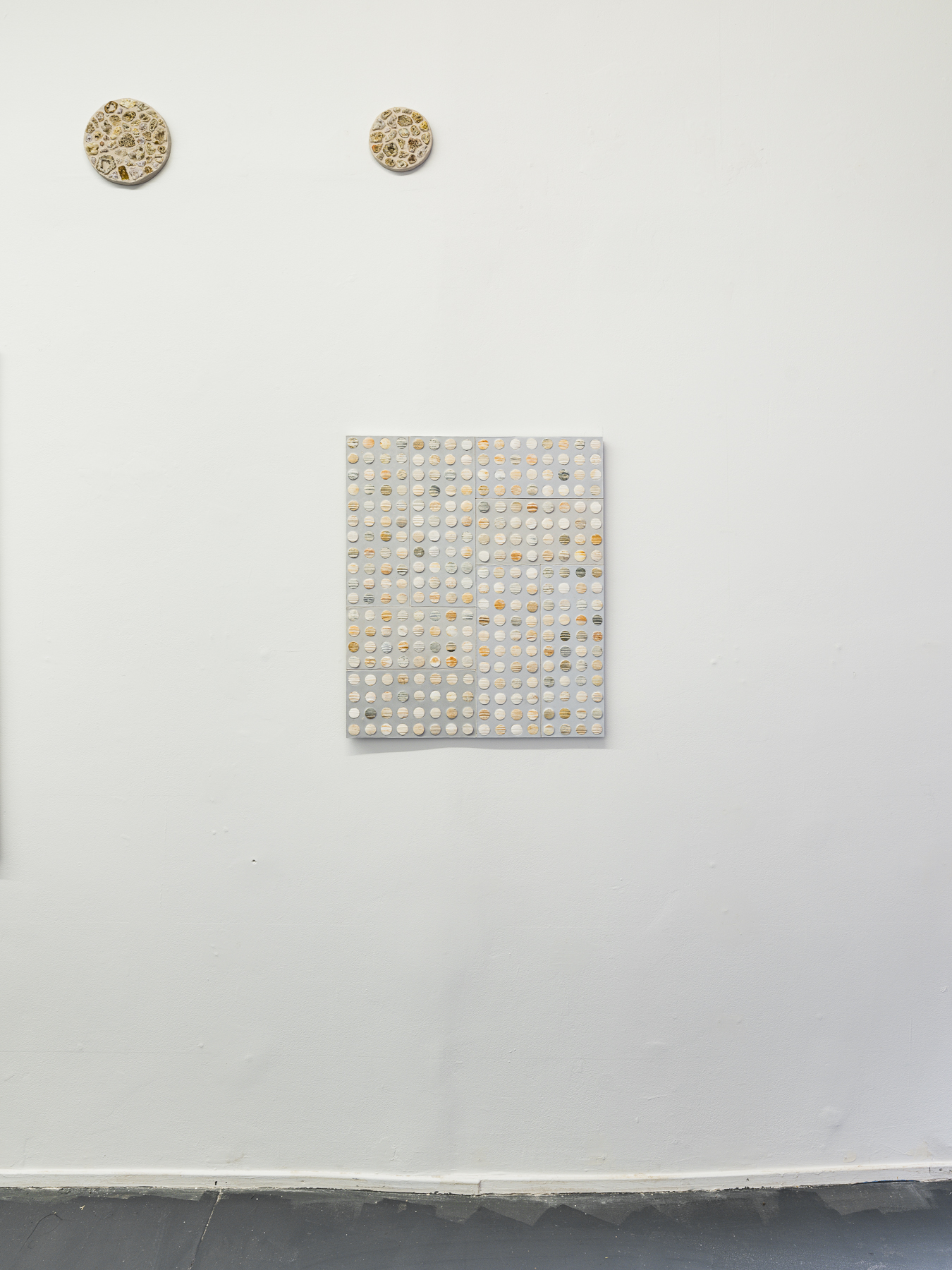E.E. IKELER
“I AM NATURE”January 7 - January 29, 2022
Opening: Friday, January 7, 12-8pm; Closing: Saturday, January 29, 12-8pm

E.E. Ikeler, I AM NATURE (After O'Keeffe and Pollock), 40" x 48", Acrylic, net and resin on ACM panel, 2020
When I brought [Hans] Hofman up to meet Pollock for the first time–because I thought, you know, here’s someone that would certainly understand the work–Hofman says, “You are very talented, you should join my class.” [...] Then Hofman said to Pollock, “But you do not work from nature, This is no good. You will repeat yourself. You work by heart, not from nature.” And Jackson’s response to that is, “I am nature.”
—Lee Krasner1
I was reminded of Krasner’s story during the 2017-2018 school year when, during the critique of a graduate student, an Emeritus faculty member scolded her for a lack of observational work. I held a “Visiting” faculty position, but what I lacked in rank was compensated for by freedom of the impossibility of my achieving tenure there. Annoyed, I defended the student, who I supported in her recent focus on abstraction. It wasn’t obvious to me at the time that I was defending my practice as well, since I could be similarly accused.
What is the relationship of observation and nature to abstraction? Hilma Af Klint famously derived some of her winding spirally shapes from the work she did as a botanical illustrator, and geometry in nature is easily observable in something as banal as an orange slice.
This comment has stuck with and troubled me, partially because I, too, believe artists benefit greatly from developing robust observational (sometimes called perceptual) skills. At the time of the critique, I had recently relocated to Bloomington, Indiana, for the job in question. I found myself spending a lot of time at a nearby reservoir, where I could collect endless fossils and geodes, which eventually made their way into my paintings. I always thought stories about Jasper Johns and Robert Rauschenberg collecting trash on Canal street to make their work was so romantic, and the minerals I was finding seemed like the closest I could get to that.
To draw accurately from observation, students are often told to “draw what you see, not what you think you see.” That kind of close and intentional looking is also required to view artwork–and especially–painting. The works in this show span a range of years and media, from fossils found in Indiana and sea shells from Jacob Riis Beach, to painted copies of paintings (one by Georgia O’Keeffe and one by my late sister), to hand made resin tiles and nets. What they have in common is a commitment to close observation, attentiveness to the interplay of image and surface, and the materiality of the grid. Pollock’s work and attitude have never been my favorite, but I believe we are all creatures of culture and of nature, too.–E.E. Ikeler
1 Blackwood, Michael, director. The New York School. Kanopy, https://wooster.kanopy.com/video/new-york-school. Accessed 3 Jan. 2022.
--
E.E. Ikeler (b.1986) received a BFA from The Cooper Union in 2008 and an MFA from Yale School of Art in 2016. Their work examines the limitations of communication through text and abstraction. They’ve had solo exhibitions at Hemphill Fine Arts (Washington, D.C.), Jeff Bailey Gallery (Hudson, NY), Mulherin (Toronto, Canada), and Kent Place (Summit, NJ). They’ve also exhibited at Pazo Fine Art (Kensington, Maryland), Essex Flowers, EFA Project Space, Abrons Art Center (NYC, New York) and Yve Yang Gallery in Boston, MA. They are the recipient of a Leroy Neiman Foundation Summer Fellowship at Ox-bow School of Art in 2016; a Yale FLAGS Award, a Helen Watson Winternitz Award and a Beinecke Rare Book & Manuscript Library Research Fellowship (all Yale University, 2015). They live and work in Brooklyn, NY.
When I brought [Hans] Hofman up to meet Pollock for the first time–because I thought, you know, here’s someone that would certainly understand the work–Hofman says, “You are very talented, you should join my class.” [...] Then Hofman said to Pollock, “But you do not work from nature, This is no good. You will repeat yourself. You work by heart, not from nature.” And Jackson’s response to that is, “I am nature.”
—Lee Krasner1
I was reminded of Krasner’s story during the 2017-2018 school year when, during the critique of a graduate student, an Emeritus faculty member scolded her for a lack of observational work. I held a “Visiting” faculty position, but what I lacked in rank was compensated for by freedom of the impossibility of my achieving tenure there. Annoyed, I defended the student, who I supported in her recent focus on abstraction. It wasn’t obvious to me at the time that I was defending my practice as well, since I could be similarly accused.
What is the relationship of observation and nature to abstraction? Hilma Af Klint famously derived some of her winding spirally shapes from the work she did as a botanical illustrator, and geometry in nature is easily observable in something as banal as an orange slice.
This comment has stuck with and troubled me, partially because I, too, believe artists benefit greatly from developing robust observational (sometimes called perceptual) skills. At the time of the critique, I had recently relocated to Bloomington, Indiana, for the job in question. I found myself spending a lot of time at a nearby reservoir, where I could collect endless fossils and geodes, which eventually made their way into my paintings. I always thought stories about Jasper Johns and Robert Rauschenberg collecting trash on Canal street to make their work was so romantic, and the minerals I was finding seemed like the closest I could get to that.
To draw accurately from observation, students are often told to “draw what you see, not what you think you see.” That kind of close and intentional looking is also required to view artwork–and especially–painting. The works in this show span a range of years and media, from fossils found in Indiana and sea shells from Jacob Riis Beach, to painted copies of paintings (one by Georgia O’Keeffe and one by my late sister), to hand made resin tiles and nets. What they have in common is a commitment to close observation, attentiveness to the interplay of image and surface, and the materiality of the grid. Pollock’s work and attitude have never been my favorite, but I believe we are all creatures of culture and of nature, too.–E.E. Ikeler
1 Blackwood, Michael, director. The New York School. Kanopy, https://wooster.kanopy.com/video/new-york-school. Accessed 3 Jan. 2022.
--
E.E. Ikeler (b.1986) received a BFA from The Cooper Union in 2008 and an MFA from Yale School of Art in 2016. Their work examines the limitations of communication through text and abstraction. They’ve had solo exhibitions at Hemphill Fine Arts (Washington, D.C.), Jeff Bailey Gallery (Hudson, NY), Mulherin (Toronto, Canada), and Kent Place (Summit, NJ). They’ve also exhibited at Pazo Fine Art (Kensington, Maryland), Essex Flowers, EFA Project Space, Abrons Art Center (NYC, New York) and Yve Yang Gallery in Boston, MA. They are the recipient of a Leroy Neiman Foundation Summer Fellowship at Ox-bow School of Art in 2016; a Yale FLAGS Award, a Helen Watson Winternitz Award and a Beinecke Rare Book & Manuscript Library Research Fellowship (all Yale University, 2015). They live and work in Brooklyn, NY.













